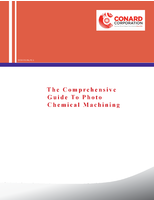Fuel Test System consists of 3 components.
Share:
Press Release Summary:
Stack Test System (STS) provides control of cathode/anode pressure and gas flow rate control. It offers outputs of DC power up to 100kW and heating power up to 150kW. Capable of simulating various applications, Electronic Load System (FCT) can be used for units up to 150 kW. Fuel Cell Test Software (FCT-600) Windows-based software determines generated electric energy and heat, overall efficiency, heat efficiency, and gas utilization.
Original Press Release:
Firing Circuits Offers Comprehensive Proton Exchange Membrane (PEM) Fuel Cell Test System
SHELTON, CT/February 25, 2002 - Digatron Firing Circuits of Shelton, Conn., a manufacturer of battery test and formation products, offers an easy-to use, comprehensive test system for the growing proton exchange membrane fuel cell development market. The system includes three components - the Stack Test System (STS), Electronic Load System (FCT), and Fuel Cell Test Software (FCT-600) - and provides user-friendly and flexible programming which ensures that all tests can be optimized for every required parameter.
The Stack Test System provides control of cathode/anode pressure and gas flow rate control. It has separate cooling and heating regulator units and a humidifier system that is set and regulated by the easy-to-customize system software. It offers outputs of DC power up to 100kW, optional AC power, and heating power up to 150kW.
The Electronic Load System's (FCT) standard design can be used for units up to 150 kW. It is able to simulate applications such as: transmitting stations, remote site power stations, electric vehicles, electric hybrid vehicles, residential energy systems, and portable devices. The system can operate in stand-alone mode or can be interfaced with external stack test systems.
The FCT-600 Fuel Cell Test Software makes it easy to create complex test regimes in a user-friendly environment. The Windows-based system has menus set up in familiar formats, and even the longest and most complicated test programs can be saved as a specific procedure and used later on by simply referencing the procedure's name. A full set of data evaluation and presentation functions is available to determine generated electric energy and heat, overall efficiency, heat efficiency, and gas utilization, among other necessary information. Further, the software is network capable and has a full tutorial for new users.
Used in tandem, these products form a comprehensive fuel test system which offers user freedom in test program planning, user-defined system parameters, a dynamic sampling rate, and a parallel running program that controls background functions such as gas flow rate, pressure, humidity, and load control. The user can pay attention to their specific area of interest and be sure that the system's other variables are being monitored and controlled in the background.




